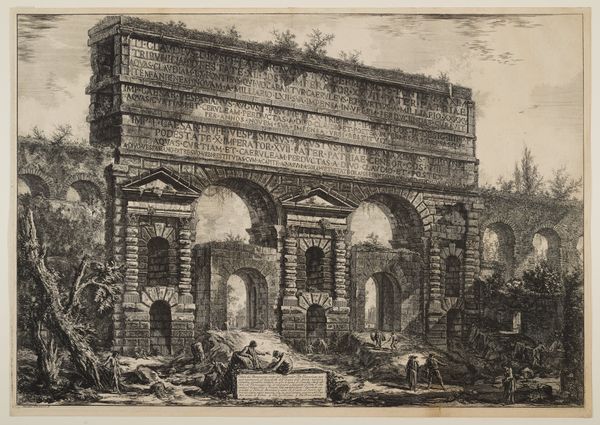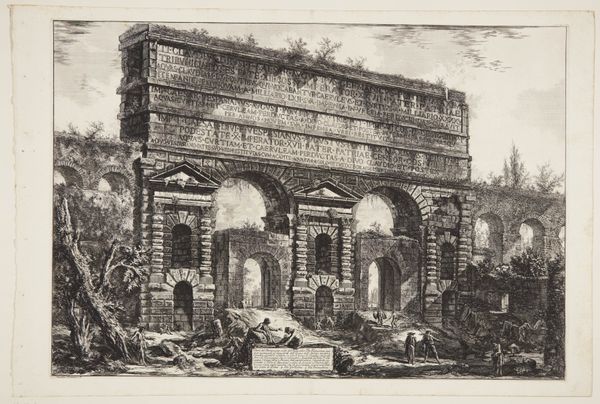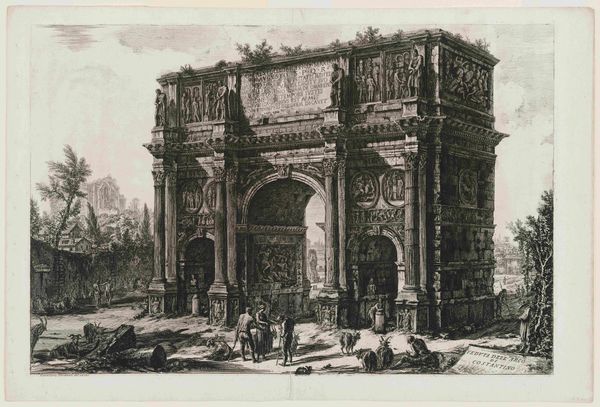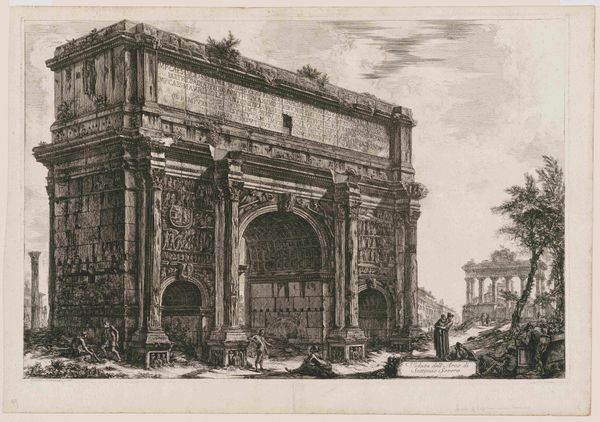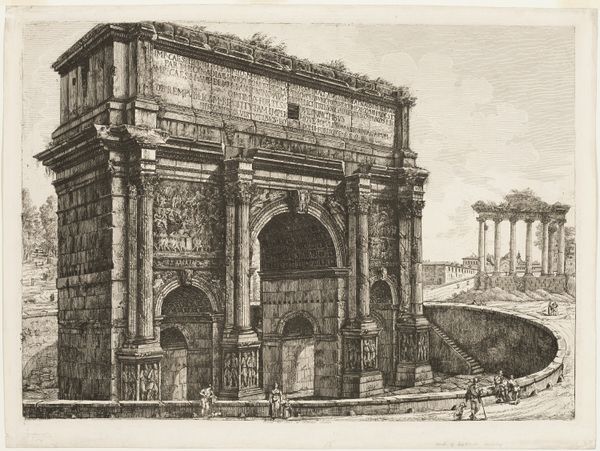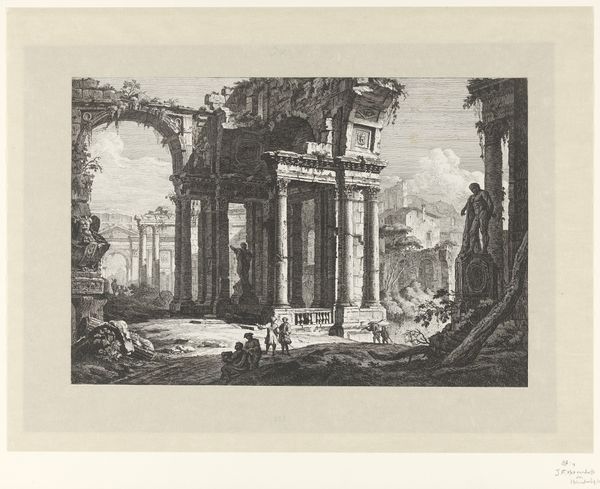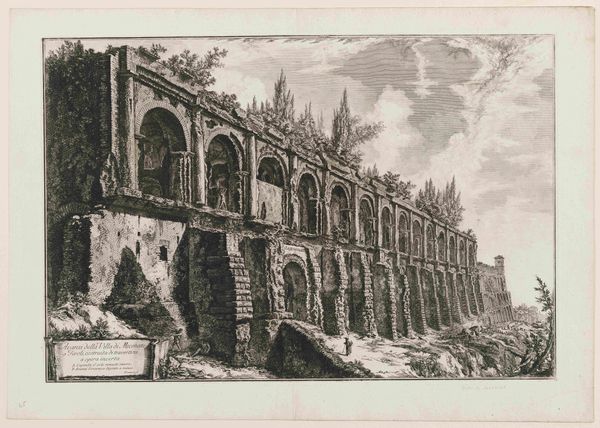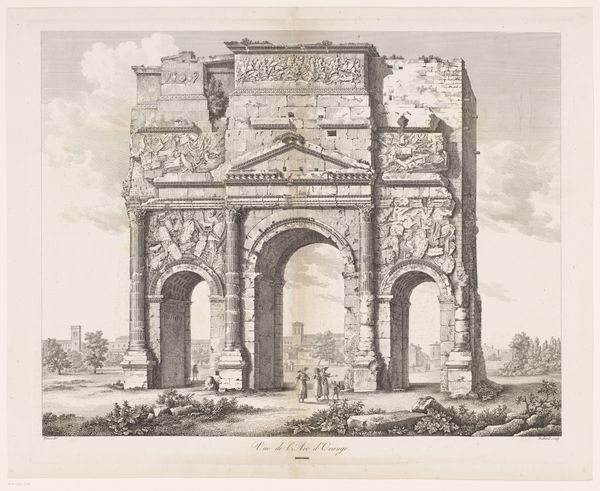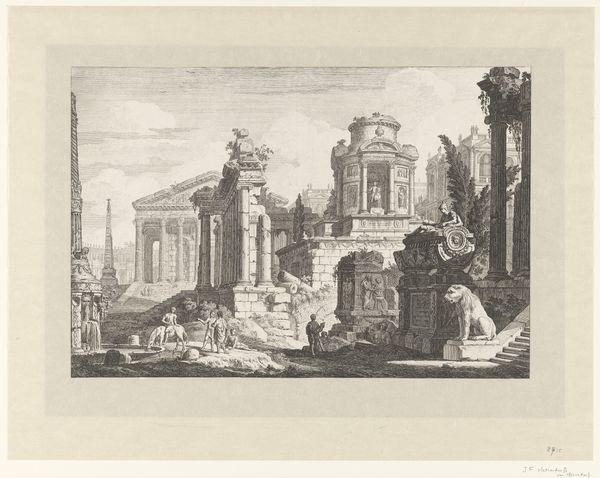
print, etching, engraving, architecture
# print
#
etching
#
landscape
#
romanesque
#
cityscape
#
italy
#
engraving
#
architecture
Dimensions: 19 1/4 x 27 7/8 in. (48.9 x 70.8 cm) (plate)21 3/8 x 30 1/4 in. (54.29 x 76.84 cm) (sheet)
Copyright: Public Domain
Giovanni Battista Piranesi made this etching of the Arch of Vespasian using metal plates, acid, and ink. Look closely, and you will see the distinctive qualities of the etched line, made by coating a metal plate with wax, scratching an image into the wax, and then dipping the plate in acid, which bites into the exposed metal. The plate is then inked and printed, leaving a characteristically sharp, slightly raised line on the paper. Piranesi was a master of this laborious process, and he used it to great effect here. This print speaks not only to the grandeur of ancient Rome, but also the world of labor required to build and maintain it. Aqueducts like this were essential to the city's infrastructure, and their construction demanded the coordination of many skilled workers. Next time you encounter an etching, consider the way that its unique qualities are bound up with both the artist’s vision, and the collective social history of its making.
Comments
minneapolisinstituteofart about 2 years ago
⋮
Even the ancients recycled their architecture. The Porta Maggiore was originally built as a decorated segment of two aqueducts (structures for channeling water) built in 52 CE. The aqueducts brought Romans fresh water from sources miles away. The loss of adjacent segments of stonework has revealed two openings on the left side of the upper section, showing where water passed through the Porta Maggiore. In addition, two major roads ran through its larger arches. Later planners filled in the arches to incorporate this structure into the walled fortification surrounding Rome, and it became the main gate on the city’s east side.
Join the conversation
Join millions of artists and users on Artera today and experience the ultimate creative platform.
